For a long time, links have been considered the main ranking factor in search engines. The right links bring in a ton of referral traffic and a boatload of customers. This is why so many SEOs try to game the system with “unnatural link building.”
Any way you slice it, you need links to run a successful e-commerce business. And Google needs links to have quality search results.
Table of Contents
- 1 25 Places to Get Backlinks for eCommerce
- 2 1. Claim Your Brand Online
- 3 2. Guest blogging
- 4 3. Citations and Listings in Business Directories
- 5 4. Include your brand name in marketplaces
- 6 5. Ask for opinions in communities
- 7 6. Put a link in your forum profile signature
- 8 7. Submit your store to web design galleries
- 9 8. Submit your store to icon galleries
- 10 9. Organize giveaways to bloggers
- 11 10. Offer discounts to bloggers
- 12 11. Find vendors that link to retailers
- 13 12. Reach out to partners
- 14 13. Send a press release
- 15 14. Ask your customers for product reviews
- 16 15. Care about your customers
- 17 16. Reclaim brand mentions
- 18 17. Find sites that use your product photos
- 19 18. Find broken links
- 20 19. Find people looking for your products
- 21 20. Make donations
- 22 21. Offer a scholarship
- 23 22. Get involved in Expert roundups
- 24 23. Get interviewed on podcasts
- 25 24. Run Promos on Deals Sites
- 26 25. Bog Commenting
- 27 Are You Going To Build Links Or What?
25 Places to Get Backlinks for eCommerce
In this article, I share with you 25 places where you can build backlinks and, of course, get some targeting traffic (i.e., shoppers).
Now it’s time for the fun part: getting quality backlinks.
I’m going to share with you 25 eCommerce link-building tactics that will work well for years to come. I’ve used some of them for my online store, others I’ve seen other SEO experts use.
As you may know, link-building tactics have changed over the years. What worked five years ago may bring low results now or even harm your website. That’s why you need to be updated.
What not works today and does more harm than good: mass blog comments, mass forum posts, links from comprehensive directories, guest posts on low-quality sites, and blog farms.
Below you can find several link-building methods that proved their worth in time. Feel free to grab and test any one of them today.
1. Claim Your Brand Online
For an e-commerce website, branding is important. That’s why I advise you to register ASAP your social media pages and web 2.0 properties. You can use them to post updates and syndicate your content.
Social Media Accounts:
- Youtube
Web 2.0 sites:
Reviews sites:
Instead of checking manually on every site, you can think of using these tools: Namechk.com, InstantUsername.com, and Knowem.com.
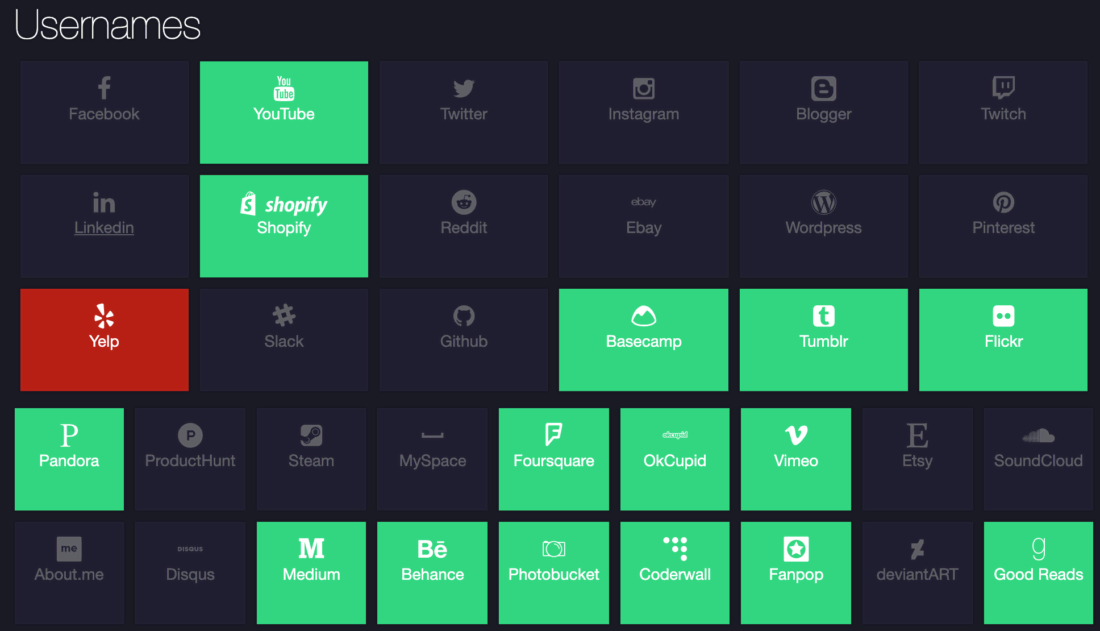
Keep a doc with all these properties, and make sure you log in and update content from time to time. An abandoned profile does more harm to your business than a non-existent one.
Action plan:
- Check the sites that are relevant for your niche using Namechk.com and other tools.
- Register the accounts and claim your page and brand.
- Post relevant content and link your store.
- Keep these properties updated.
2. Guest blogging
A lot has been spoken and written about guest blogging, so we will not go into great details here. The best resource on the topic is this video on Mixergy by the co-founder of Buffer.
One of the key takeaways from Leo’s interview for me is to write blog posts for a wider audience: The problem is that customers aren’t the ones who will send you the most traffic. Instead, you need to reach “a large audience that could be inspired,” he says, “and goes away and maybe tells someone.”
I know what you are saying by now: “I run an eCommerce business, I don’t run a software business. I can’t do guest-blogging”.
Yes, you can. As an eCommerce owner, you probably have a broad multidisciplinary skill set. Why not share that knowledge with the world?
Topics on which you can become a trustworthy expert:
- eCommerce
- marketing
- product and services
- payments
- inventory management
- people and processes
- product reviews
- dealing with unusual situations
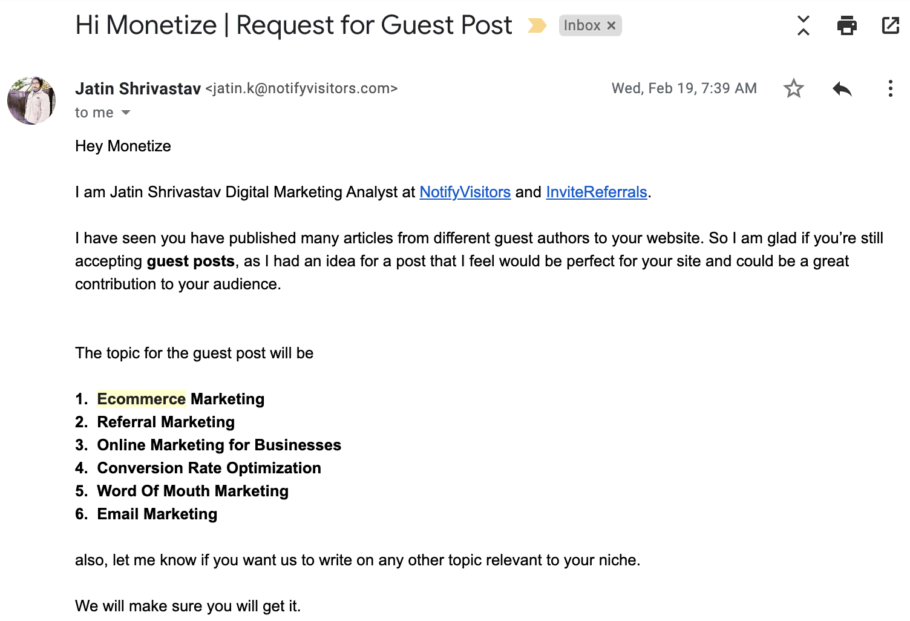
Do a google search or use a guest posting tool like Outreach.buzz has a database of over 3800 blogs that accept guest posts. Identify blogs that would be a good home for your content. Figure out what is the most popular content on these blogs and then pitch the blog owners.
Outreach email template:
Hello [name of blogger],
[Short introduction]I’d like to share my knowledge with other people on the topics of [your topic]. In the last few days, I’ve been writing an article on [your topic]. I noticed that your readers are interested in [the topic]. Here are the points I can contribute to your blog:
[A brief list of things you are going to write in your post]I think this material will be well worth it for your readers; what do you think?
Best Regards,
[your name]
The best thing is you don’t have to write the whole article before you get a green light. You just go to the next one.
You can outsource your link-building efforts to any of these 15 best link building services we reviewed.
More readings on Finding Guest-authoring opportunities:
Action plan:
- Start with Outreach.buzz.
- Identify blogs that are a good home for your content.
- Pitch them using the email template.
- Write the articles yourself or hire a writer and send them for publishing.
3. Citations and Listings in Business Directories
Local SEO optimizes your local business website to find the local searches in Google most relevant to your business.
For anyone wondering how local SEO differs from normal SEO, the former is about building relevant signals around a specific location. In contrast, the latter is the practice of getting higher SERP rankings for relevant keywords.
With more and more people using smartphones and voice search usage on the rise, the future lies in local mobile marketing. Having an SEO-compliant website and a robust local SEO strategy will get your website onto Google’s local listing pack.
Only submit your store to local directories if you have **a business** physical address. I’ve tried otherwise, and it didn’t work out. If your address looks suspicious YellowPages, others will reach out to you to confirm that you use a business address.
Check out this list by Hubspot; it’s an extensive collection of local business directories. I would suggest starting from there.
List of Citations and Business Directories Opportunities:
Action steps:
- Identify the right citation for your niche and your business.
- Submit your business to these citation sites and monitor the process.
4. Include your brand name in marketplaces
Although not an exact link-building tactic, this method is critical if you sell on Amazon, Etsy, or eBay. I can’t stress enough how many people use eBay store names differently from their domain names. Don’t do it!
The importance of brand search on Google is increasing, and it’s one of those authority factors that will play a more significant part in search engine ranking every day. Think about UX factors here. The more people search your brand on the SERP page, the better your search engine rankings.
For your eBay and Amazon stores, use the same name you use for your domain name. This tactic will ease people from finding your original store through the search engine and increasing your CTR for brand searches.
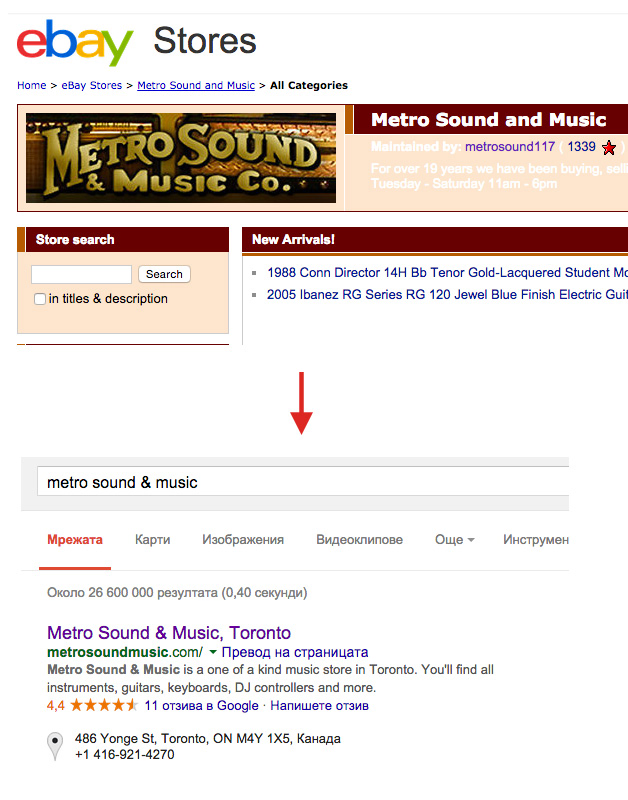
Successful cross-branding across marketplaces is all about using your store name.
Lists of Marketplaces where you can list your store :
Action steps:
- Look for marketplaces (local, national, international, and niched) for your store.
- Make your marketplace store name the same as your domain name.
- Put your logo on your eBay page.
- Include some elements that could drive traffic to your stores, like a phone number, description of your store, or even an invitation (even if just implied).
5. Ask for opinions in communities
This tactic is all about providing value to get value.
Create rapport and trust by regularly posting on the message board before you talk about yourself. Never, and I mean NEVER, should your very first post be about your store.
Engage with the community for at least a few weeks, write helpful and detailed posts every other day. Only after you contribute, you can ask for an opinion. Never come out too promotional.
I got my first paying customer for my novelty gifts and gadgets store just 2 hours after posting a thread about my online shop. I asked for a genuine opinion about my online shop’s design, prices, and product selection. In return, I got customer and helpful reviews.
You or your store might get dissed when you do that. I made the mistake of being defensive about my shop and came back with some opinionated replies.
When you start receiving negative answers, hold your horses before you reply. Always be thankful for the opinions you get, or at least try to be neutral.
When doing this tactic, I was pretty selective about the niche communities I’m targeting. I’ve only posted threads where I assumed other geeks reside, like developers’ message boards and other tech-savvy organizations.
It’s ok to be a community member with an online store. It’s not ok to be an online store with a community profile.
Action steps:
- Target only the right communities
- Create rapport by posting regularly
- Ask for a genuine opinion about your store.
- Be thankful for every answer you get
- Don’t be promotional
6. Put a link in your forum profile signature
Even considering the forums are declining, I still consider them a good backlinks source. But for that, you should spend some time identifying the forums that are still active in your niche. Don’t overlook it.
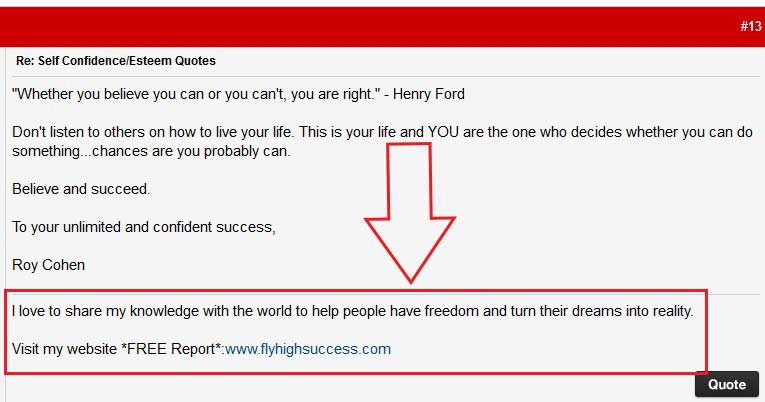
Most forums use “no-follow” links – they won’t bring any SEO juice and increase your search engine rankings. But forums are still worth it for the traffic that comes from them.
Offer a product promotion or other incentive in your forum signature to attract more users to click on your store link. Joanna from Copyhackers advises people to “click here” and put visual elements to lead people to click.
Use this template for your signature:
➤ Click here to get [your promotion] from my online store [store’s domain].
For example:
➤ Click here to get 10% off Star Wars products from my online store MenGear.bg
I like to use Goo.gl URL shortener or Bit.ly to get stats like how many people click on my forum signatures.
Further readings on getting backlinks from forums:
Action steps:
- Identify and make a list of forums that are still active in your niche.
- Register a profile, introduce yourself, and start posting useful content.
- Create a product promotion.
- Shorten the promotion landing page URL with Goo.gl and Bit.ly
- Put a forum signature linking to your promotion with visual signs and “click here.”
7. Submit your store to web design galleries
If your store has an extraordinary good design, you can send your web page to a service like The CSS Gallery List. A team of people will manually submit your link to an extensive list of web design galleries.
You might also want to consider CSSMania.com. It costs $10 to submit a site on there, but it will get you some decent traffic to your store. You could expect between 300 and 3000 user sessions.
Bear in mind that 70% of the CSSMania traffic comes from India, so unless you offer delivery to India, this traffic might not be worthy of conversion traffic.
The Awwwards web design gallery is the most popular among the web design galleries and the hardest one to get on to.
For you, I’ve compiled a list of web design galleries that specialize in eCommerce websites:
8. Submit your store to icon galleries
Credit again to Brain Dean for this one(the man is a backlinking genius). There are many graphics sites where you can submit icon sets, like social media icons to. Make icons themed to your niche and submit them there. Find a list of them here.
Here is a list of icons galleries that you can submit your icons to:
9. Organize giveaways to bloggers
If you sell products in the lower or mid-price range (between $5 and $100), you can give bloggers to your industry.
Along with the guest-blogging tactic, giveaways are by far the most effective method I’ve used to build quality links (and traffic) to my store. By now, you should’ve collected at least a couple dozen of authoritative blogs in your niche.
Now let’s reach out to them.
Cold-email template:
Hello [blogger’s name]
[A short introduction to you and your store].
I’m approaching you because [rapport creating reason].
I’d like to ask what you think about our store.
Finally, I’d like you to give us an address where we can send a small gift we’ve prepared for you. We think you’ll like it.
Best Regards,
[Your name]
Cold-email outreach example:
If the template above looks confusing, check an example email I’ve used.
Hello Martin,
I’m Kaloyan, co-founder of a new website for unusual gadgets and all other geeky things — mengear.bg.
I’m approaching you because I found out that you like the stuff we have. I noticed you were looking for geeky things like ThinkGeek.com, but you had difficulties finding them locally.
We have some of the ThinkGeek stuff; it would be awesome if you could check them.
Also, As you are a person that’s deep into the geek subculture, it will be helpful for us if you have 2 minutes to check out our site. Don’t hesitate to share your opinion about the products we list and the site in general.
Finally, I’d like you to give us an address where we can send a small gift we’ve prepared for you. We think you’ll like it.
Notice how I’m creating rapport by talking about his problems first. Prove attention by mentioning a material on their blog or another notable fact about them.
With this approach, I got a mind-blowing 90% response rate. Bloggers like to get attention! Most corporations do when they send out a gift to bloggers using a generic “congratulations, here’s your gift message.”
Don’t be a heartless bastard. Include a personal message! It doesn’t have to be anything fancy or expensive, just be personal.
To one of the bloggers, we sent excellent 8-bit glasses with a personalized geeky message:
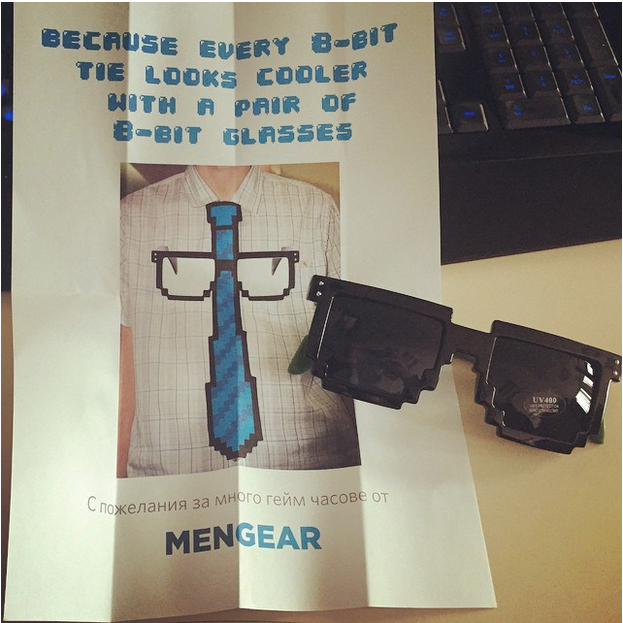
Giveaway with style. Always use a personal message when sending gifts to bloggers.
Here’s the referral traffic we received from that blogger:
Not only that, but a few more people shared our new message. All in total, costing us $5.
Action plan:
- Use the email template above to contact authoritative bloggers in your niche.
- Ask for their address.
- Send them a gift and a personal message worth sharing.
10. Offer discounts to bloggers
This tactic is like the one above but instead of offering bloggers a gift. You give them a promo code.
You reach out to bloggers using the email template from the previous method, but you include a note like:
I’d like to make a small discount for you and your blog’s readers as we believe they’ll enjoy the stuff we offer. Here’s a discount code for 10% OFF “discount code.”
If you are using WooCommerce for your shop, Woo has a pretty good built-in Coupon codes feature.
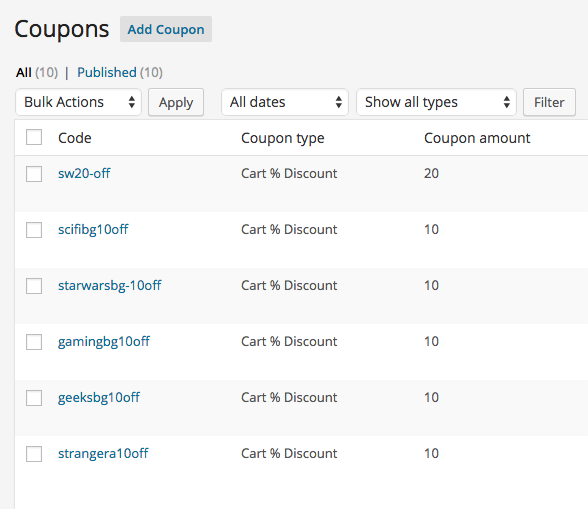
To stay organized, I like to name my coupon codes using this structure: <blogger’s site name>< % of coupon>-off.
So, for example, strangeracom10-off (Put a dash before “off,” so people don’t confuse zero with the letter “o.”)
11. Find vendors that link to retailers
Most product packages contain the name and address of the original distributor or manufacturer of the product. Look carefully at your product packages.
Map of retails on the distributor’s site.
Search for:
- “vendor’s name” + where to buy
- retail list + “vendor’s name”
- “vendor’s name” + buy locally
- “vendor’s name” + store locator
Then approach the vendor by asking them to link to your store.
12. Reach out to partners
When it comes to link building, reaching out to organizations you already have a relationship with is low-hanging fruit. Start with this.
Do you have any suppliers who may be open to this? Or are you sponsoring organizations? It’s only fair you get some credit. Even if it’s the local soccer club, they probably have a website that includes a sponsor page.
Check below the partners’ program of Mautic. For a sponsorship of $100 monthly, you will have your logo along with a backlink on their partners’ page.
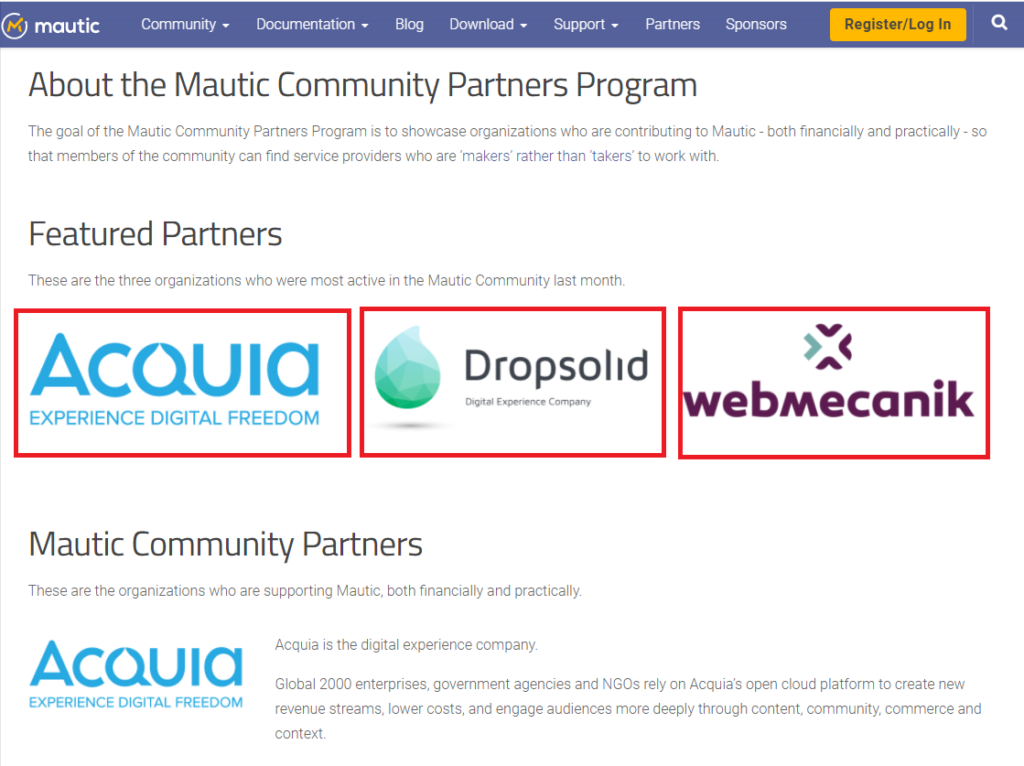
13. Send a press release
Even though Google is downplaying press releases, it’s still an excellent way to get EXPOSURE for your brand. I’m emphasizing exposure here and only including this idea in this list because you DO get a backlink out of it.
It’s a good idea not to use keywords in your press releases to save yourself from an anchor text penalty from Google, just in case scrapers pick up your news release and decide to spam the web.
14. Ask your customers for product reviews
If someone just bought a product from you, then this is the perfect time to ask for a product review if they have any authority on the web.
Not only you’ll get a link, but reviews bring repeat purchases, up-sells, and increase your influence.
I like to reward reviewers with a discount code.
Use this template to get your shop customers to write a review for you:
Subject title: Review your recent purchase to get a discount
Body copy: Thank you for your recent purchase. I hope you like your new gadget. If you have a blog or a website, we’d like to give you if you review our product.
Just send us back the link to your review, and we’ll send over a promo code to you!
Are reviews for links dangerous?
I never had any problems with getting backlinks from reviews, but I only used this tactic on a small scale.
This article from the Search Engine Watch outlines some potential dangers from doing review reach outs for links. I certainly agree with these points if you are a large eCommerce business doing this tactic on a large scale and asking directly for links.
When reaching out for product reviews, I never ask for a link, let alone an anchor tag. Because this is not the way, you talk to potential customers and humans.
Be careful when:
- applying this tactic on a large scale.
- Asking directly for a backlink.
- Asking for an anchor tag.
15. Care about your customers
Care about your customers, and especially about those that are critical of your brand.
I found that people who are harmful to your brand are the most vocal customers in general. You’d like to do your best to convert them to happy customers.
Install a product review or comments plugin on your website. This is an excellent roundup of product review plugins for WP by Elegant Themes if you run a WooCommerce store.
Ensure you follow every comment under your products and personally get in touch with the bad ones’ authors.
Check this out:
I received an awful comment that one of my products was way overpriced. She was right. I had raised the price markup of that product way higher than I should have.
I did a bit of research on the customer (stalker alert) and found out that she was a blogger. She had bought the product from another place way cheaper. Not only that, but she had a whole blog post on that product and some fantastic photography of the product.
I sent her an email personally explaining our store’s benefits, and I offered her readers a product discount. In exchange, I asked if I can use her excellent photography on our product page.
The result: I managed to convert an angry customer into a brand promoter.

16. Reclaim brand mentions
If your store gets mentioned on the web, then make sure you ask for a backlink. Check this article for brand monitoring tools for social signals and brand and keyword monitoring.
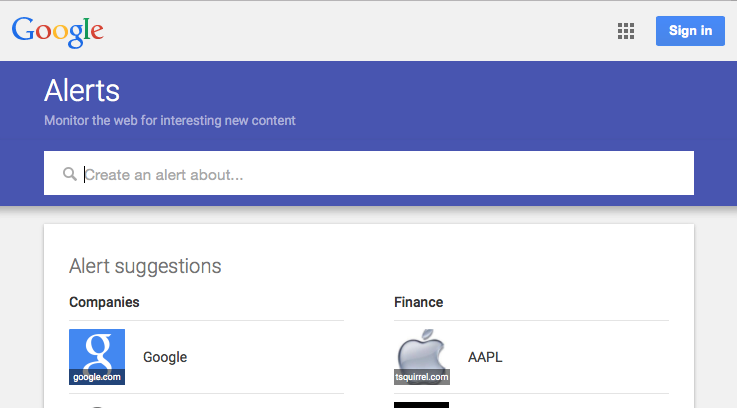
Google Alerts is a free tool from hmm. Google will send you an email when a mention of the setup keywords is found online. Go through all of your brand mentions and see if you’ve already got a link. If not, reach out and ask for it.
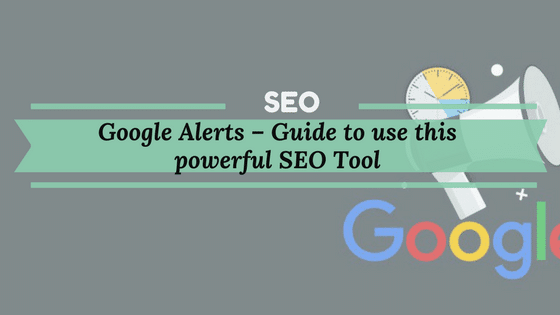
From practice, I’ve seen that the mentions are sent quite late, so it may not be the best tool for you if you look for instant mentions like angry reviews, for instance.
17. Find sites that use your product photos
If you are a brand like Firebox and make your product photography (that is also amazing), it’s likely someone already stole a picture or two of yours.
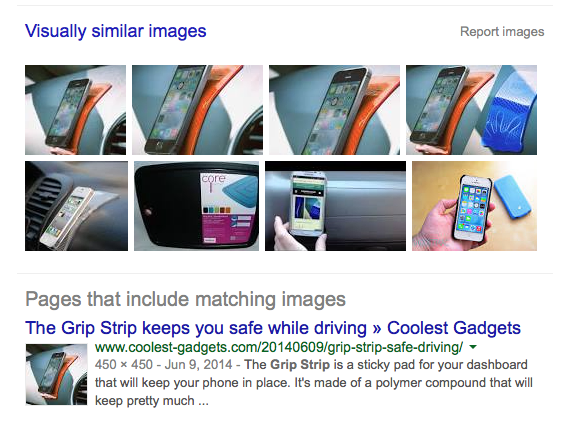
Other sites might sometimes use your product photos for different reasons: in articles, blog posts, etc.
The tools that will help you in finding your images are Google Images and TinEye.com.
Politely reach out to each and ask if you could have a link back. Most website owners will be surprised to receive your message and are often open to giving credit for the images.
18. Find broken links
Finding broken links on sites is an old link-building tactic that works well for eCommerce, too. In a nutshell, your search for websites that could be a home to your link by looking for broken links. If any, you let the site owner know and ask if she can replace the broken link with a link to your store.
There are plenty of product aggregators and catalogs on the web. All you have to do is search for broken links linking to non-existent product pages.
The Broken Link Building Bible is an excellent resource for finding broken links. And this is the most extensive round-up on broken link building resources (save it for later).
Or if you want to make your life easier (and you are fine with joining the dark side), ahrefs made this quick video showing all link building bros to find broken links extremely fast. And it’s easy!
19. Find people looking for your products
If you are selling products hard to find locally, you can find people searching for your stuff.
Scan niche communities, forums, and websites by searching for your products. Outreach to those looking for the things you sell.
20. Make donations
Organizations often give credit for donations you’re making. Check what donations you’ve made, and see if they list donors with links. If they do, make sure you get a listing as well.
In the software development industry, it’s widespread to use Open Source software. You can always decide to make a small donation to show them your gratitude and get a link in the process.
Further reading on getting backlinks for donations:
21. Offer a scholarship
Scholarships are great ways to help students pay for their studies and get awesome .edu backlinks to your website. How does it work? You create a scholarship page and offer a scholarship to a student. The reason may be making an excellent article or a video proving they are worth it.

Once you have the scholarship ready, you should contact universities and scholarship websites to promote it. Please pay it correctly and offer the scholarship to the winner.
Further reading on getting backlinks for scholarships:
22. Get involved in Expert roundups
An expert roundup post is a blog post that features contributions by multiple experts in your niche. The most effective roundups pose a particular question that the experts can quickly respond to.
When done correctly, expert roundup posts can help you and your store stand out. Above all else, they can provide a ton of value to your customers.
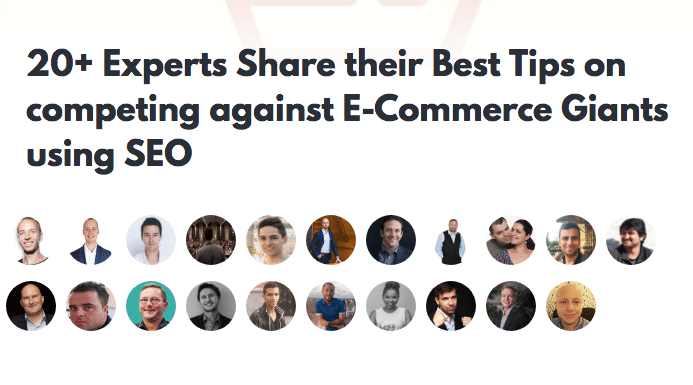
Now will have an amazing piece of content that you, the experts, and your audience will love to share and give a backlink to their mention.
More articles on creating and promoting expert roundups:
23. Get interviewed on podcasts
Getting on a podcast is a great way to get your message out to the right audience and possibly land a backlink from the podcast guest.
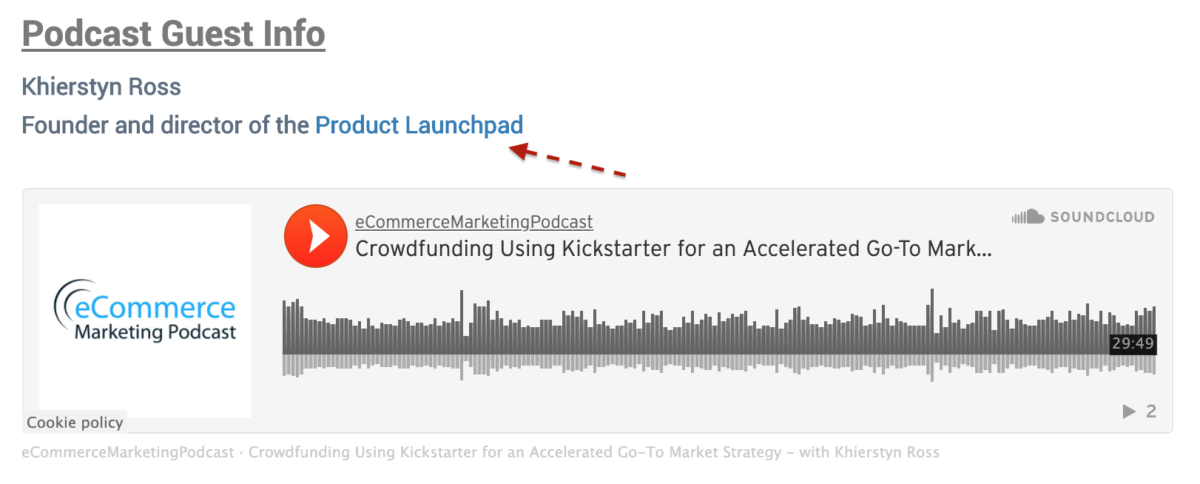
There are many places where you can find podcasts related to your niche and industry. Here is an article with several podcast sources you should look into Apple Podcasts, Spotify, Google Podcasts.
After you made a list of several podcasts you want to appear on, it’s time to start the outreach work. Make an excel-like in the picture below and start pitching.
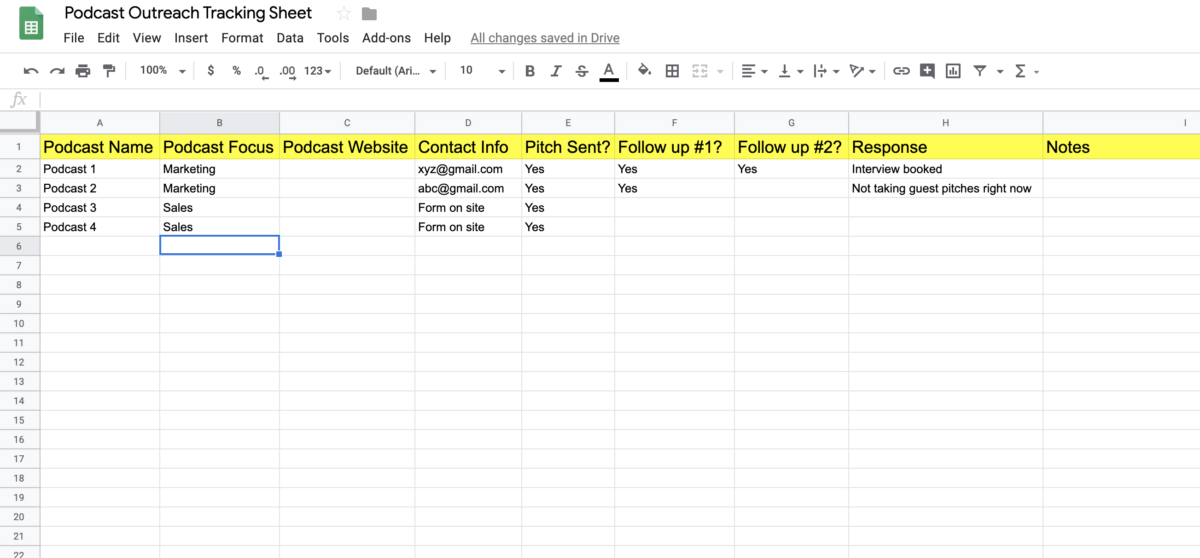
Don’t get disappointed if you don’t get too many answers. Follow up. In the links below, you will find several templates that have proven to work well. You should also kindly ask the guest to place a link to your shop in the podcast episode description.
More articles on getting interviewed on podcasts:
- 42 Top Ecommerce Podcasts That Will Make You an Ecommerce Magnate
- How To Get Interviewed On Top Podcasts In Your Industry (Complete Guide)
- How to Get on Podcasts as a Guest & Impress Listeners
- The Ultimate Guide to Getting On Podcasts as a Guest
- How To Get Podcast Interviews (+ Free Pitch Outreach Templates
24. Run Promos on Deals Sites
Another excellent tactic for driving traffic to your site is promoting your offers and discounts through deals sites. You may not have a year-round offer, but when you come up with a promotion, make sure you get in touch with them.
Here are some of the best websites through which you can promote your deals: Slickdeals, DealNews, TechBargains, Offers.com
You can even enhance the visibility of your deal by investing in advertising on these sites. Slickdeals, for instance, allows retailers to be part of their “Featured Deals.”
Promoting your offers on these deals sites is a great way to improve your website visibility among customers interested in grabbing the best deals. And if your offer is enticing enough, you can easily lead them to your site.
25. Bog Commenting
I’ve recently written an extensive guide on finding blogs to comment on and what you should do to make sure admins approve your comments and secure a backlink. Please give it a read here: How to earn backlinks through blog commenting.
If you’re planning on leaving a blog comment, make sure you thoroughly read and understand the post. Then thank the writer for the tips and insights. Follow this up with a brief mention of what you think regarding the topic and then discuss a relevant article from your blog or mention your tool/service when it’s appropriate. In other words, your comment should add value to the conversation instead of blatantly promoting yourself.
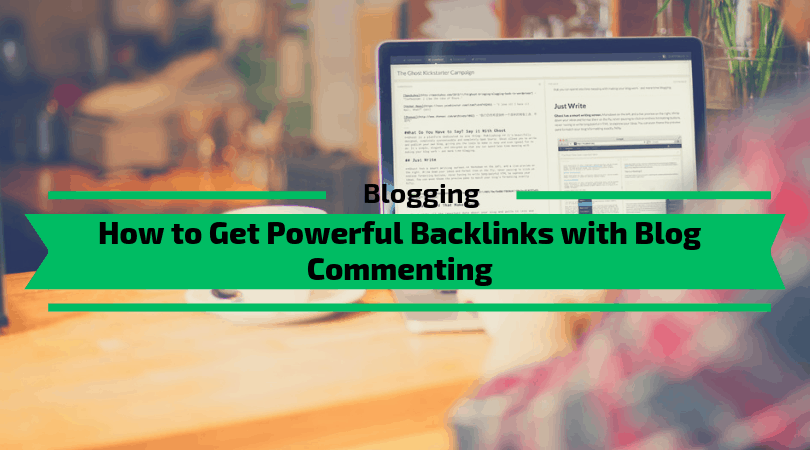
You can start by picking out a few relevant keywords and reading the top blog posts in the search results. And then, follow the tip above to write valuable and insightful comments while linking back to your website’s relevant page.
Are You Going To Build Links Or What?
At the end of the day, good marketing is good to link building. What’s kept me penalty-free for a decade is answering this simple question: would I want this link if Google didn’t exist? If the answer is yes, then you want the link.
If you’re auto bombing comments and hacking sites for links, you’re doing it wrong. Market your site and products to your target audience, and you’ll win.
Don’t let an algorithm come between you and your customer. Link on!
 Monetize.info We Help You Monetize Better Your Digital Assets! 💰👍
Monetize.info We Help You Monetize Better Your Digital Assets! 💰👍

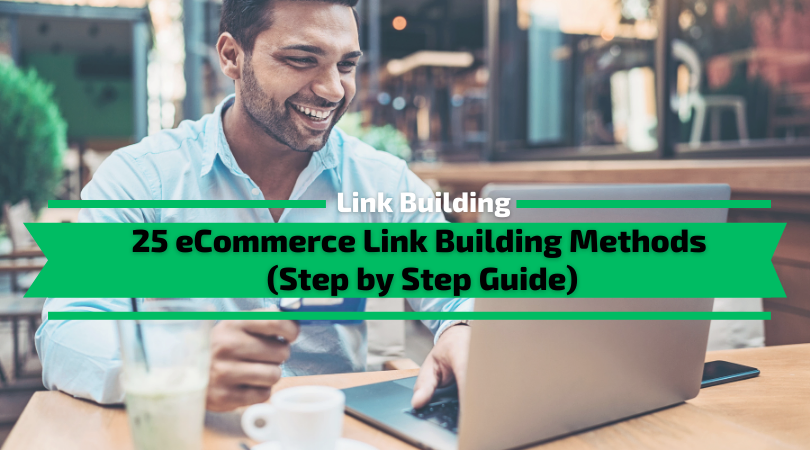


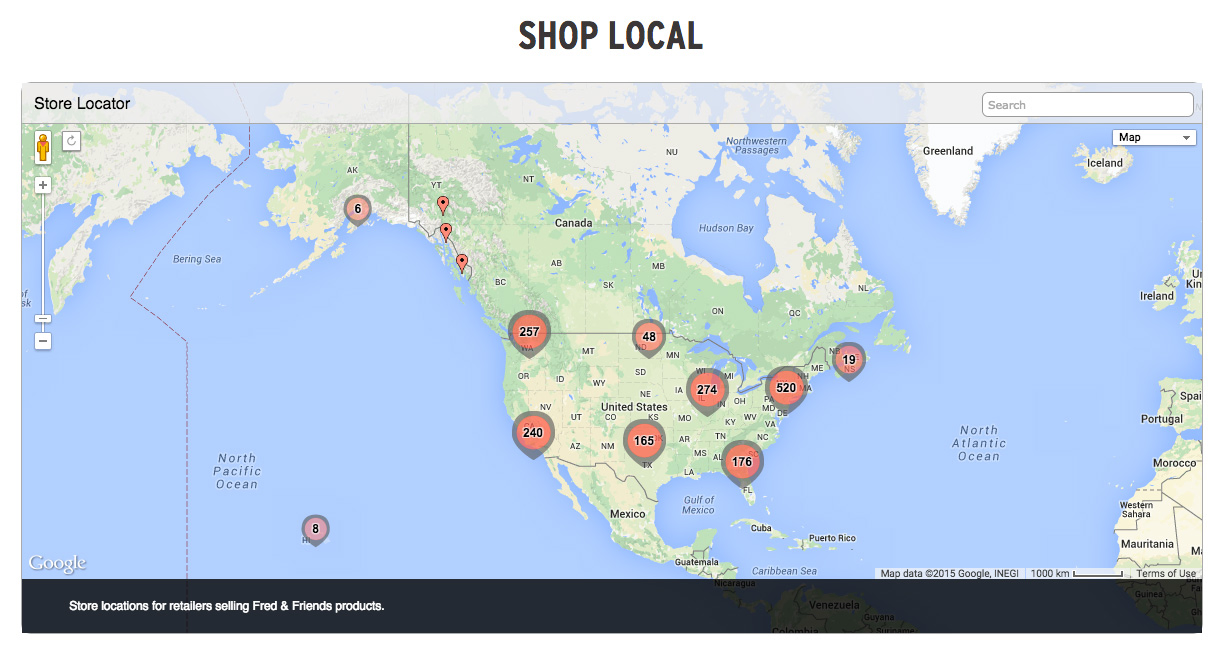
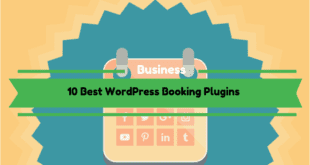


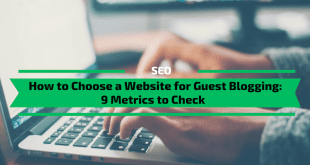

![LinkWhisper Review [Internal links on AutoPilot]](https://monetize.info/wp-content/uploads/2020/05/LinkWhisper-Review-310x165.webp)

It is an exceptional blog. Thanks for sharing these tips. Link building is one of the main elements of SEO i.e. off-page optimization. So make sure you are using an SEO Tool that gives you the best result to analyze & audit your backlinks. Keep sharing such blogs.
Nice Blog. If you are a small or large businessperson and want to manage your business online b2b marketplace in a great way .
Thanks for the advice! Building a good link profile is important. Also, a high-quality application can help in promoting a business. I know a team of specialists who can help with this.